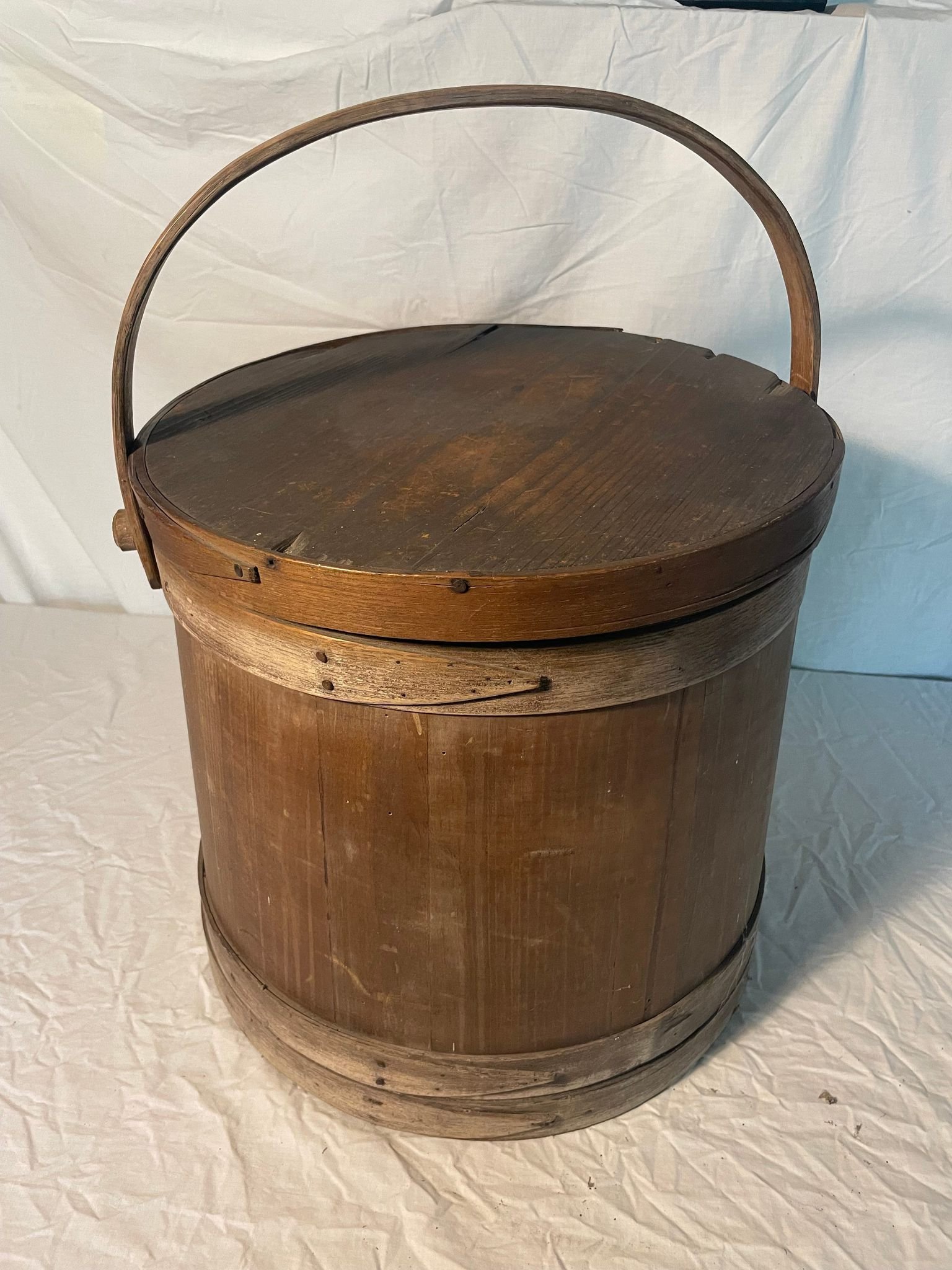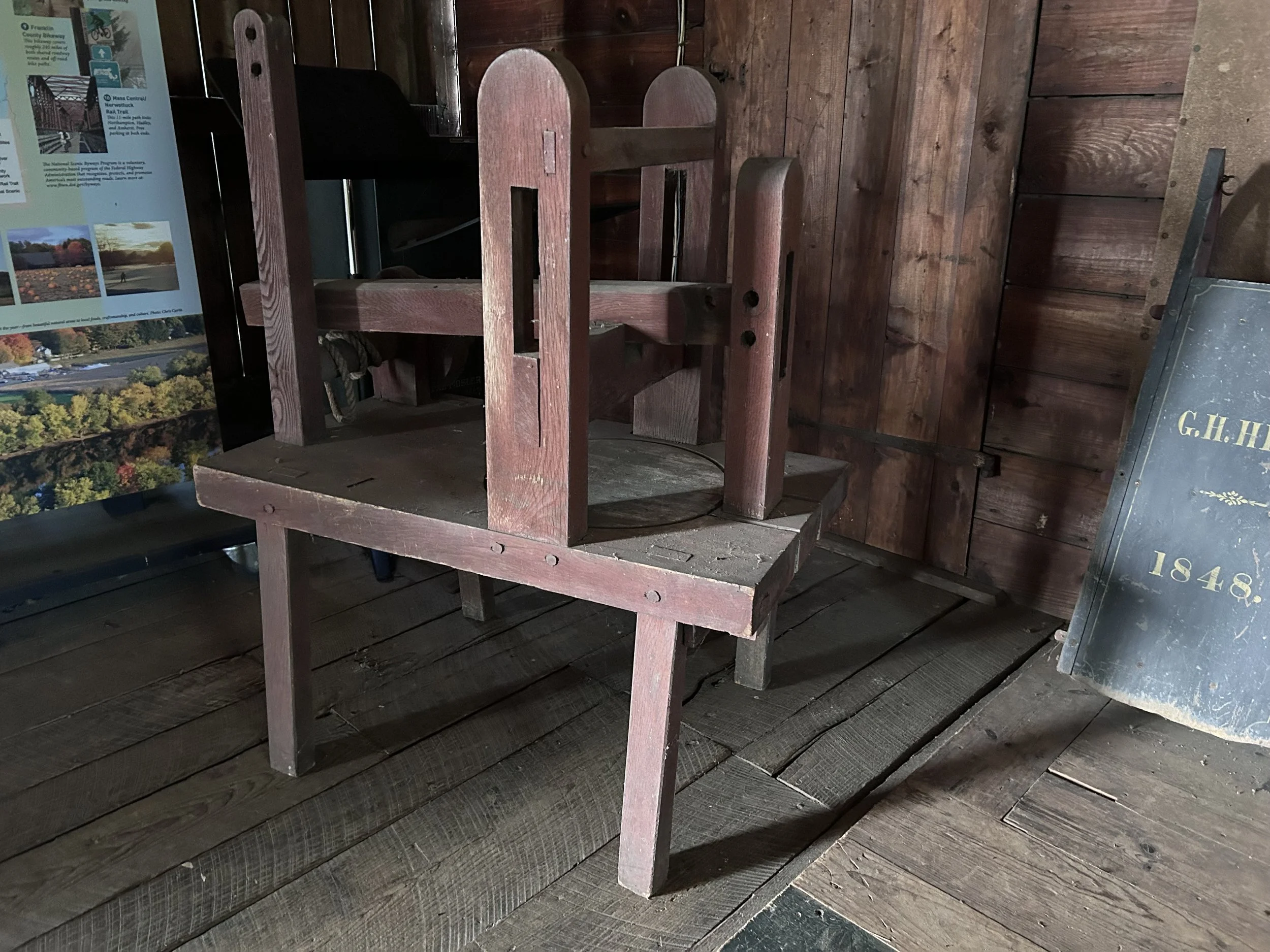Elizabeth and Moses Porter’s Forty Acres, 1752-1770 | Elizabeth Porter and Charles Phelps’ Dairy Enterprise, 1770-1817 | Farm to Summer Home, 1817-1928
Elizabeth Porter and Charles Phelps’ Dairy Enterprise, 1770-1817
The 1782 great barn (left) and the farmyard including the 1795 carriage house (right) and corn barn completed in 1797. Source: James Lincoln Huntington, Journal and scrapbook of the house at "Forty Acres" in Hadley, Special Collections and University Archives, University of Massachusetts Amherst.
Over the course of Elizabeth Porter and Charles Phelps’ tenure at Forty Acres, dairying and other types of specialized farm activity came to define the land stewardship needs of the homestead from the end of the eighteenth century to the beginning decades of the nineteenth. An early member (1795–1801) of the Massachusetts Society for Promoting Agriculture, Phelps was committed to learning and embracing prevailing practices in farm production that dramatically increased the scale of farming at Forty Acres. Phelps managed land in service of the needs of the livestock, devoting space for pastureland on Mount Warner, meadowland between the house and the river, and sheepyards nearer the house. Oats were planted to feed horses, and Indian corn for the cows and swine; hay sustained animals in winter. More modest investment was made in wheat, rye, barley, and flax. Vegetable gardens near the house included “cucumber, cabbage, beet, radishes, bean, pea, and lettuce,” while “fruit trees grew in nearby orchards.”
Objects in the museum’s collection document the extent of dairying during the tenure of Elizabeth and Charles Phelps. Shown here is a firkin, a storage container and unit of measurement for butter and cheese. Photograph courtesy of Brian Whetstone
Dairy work grew in importance during this period in the farm’s history. Cattle fattened for markets in Boston were a longtime staple under both Elizabeth and Mose Porter and during the tenure of Elizabeth Porter and Charles Phelps and dairy cows joined these extant cattle herds. Given Elizabeth Porter Phelps’s skill, dairying was an aspect of the farm economy that Charles Phelps actively sought to expand, although with some resistance on the part of Elizabeth. Elizabeth wrote in a letter in 1782 to her daughter that Charles “seems to have set his heart very much upon a dairy (sixteen cows this summer) which puts everything in a family into confusion, but so it must be. Surely it is foolish, perhaps sinful, to feel anxious about the matter.” The introduction of sixteen new dairy cows precipitated a reordering of the farm’s agricultural landscape. Most prominently, Elizabeth and Charles undertook the construction of a “great barn,” a 40-by-60 foot structure to the south of the main house that replaced an earlier barn built to the north of the house by Elizabeth and Moses Porter a generation prior. The barn’s north-south orientation facilitated the storage of hay and crops west of the farm’s drive while livestock and cattle were kept to the east. Several additional outbuildings joined the great barn during the period between 1785 and 1807, including a “sheephouse, cider mill, barn, and sawmill” as well as a hen house, carriage house, and tan house. The construction of a large working kitchen attached to the main house in 1797 placed greater responsibility on Elizabeth for the production of cheese and butter at the farmstead, with pounds of cheese shipped to Boston (and possibly Caribbean) markets. In this work, Elizabeth provided her own labor and secured and managed that of others. This work involved white, African-American, and Indigenous women’s labor, as keeping the dairy spaces well-scrubbed was essential to the work, and these laborers also helped with churning, pressing, and other activities. Family records, for instance, document efforts to get help from the “Black folks at Shutesbury”—that is, Sarah Jackson (ca. 1761–1851), an African-American woman married to a man who had escaped southern enslavement—to conduct work in the dairy.
Other objects, like this cheese press utilized by Elizabeth, Charles, and their workforce to press cheese, illuminate the nature of work at Forty Acres in the late eighteenth century. Photograph courtesy of Brian Whetstone.
Catherine Sargent Huntington’s recollections of the North Garden in the nineteenth century, showing some of the original design and layout first conceived by John Morrison in the 1770s. Source: Porter-Phelps-Huntington Foundation materials.
While dairying precipitated changes in land stewardship practices at Forty Acres that prioritized productive agriculture, new decorative and aesthetic landscape features joined these more practical land uses. Scottish prisoner-of-war John Morrison helped shape these new landscape features. Morrison arrived in Massachusetts as a member of the British forces during the Revolutionary War and joined 267 Highlanders taken as prisoners of war in Boston in June of 1776. About a year later he was dispatched to Forty Acres as an indentured servant to replace farm labor sapped by the war effort. On March 23, 1777, Elizabeth Porter Phelps recorded that “one of the Highlanders” had been assigned to their farm. During his tenure at Forty Acres, John Morrison designed and maintained the North Garden just north of the main house. Records show that Morrison built a “hotbed” (an earthen pit with a wooden frame, topped with a window) in which he raised cucumbers and tended to the North Garden’s flower and vegetable patches. Morrison maintained his own emotional ties to the landscape surrounding Forty Acres. Though furnished quarters in the house, he preferred to sleep in the great barn, or to slip off to “John’s Rock”—a glacial erratic on Mount Warner, which for the Scot had some resonance with landscapes at home in Scotland. In time he succumbed to alcoholism, and died at the farm in 1814.



